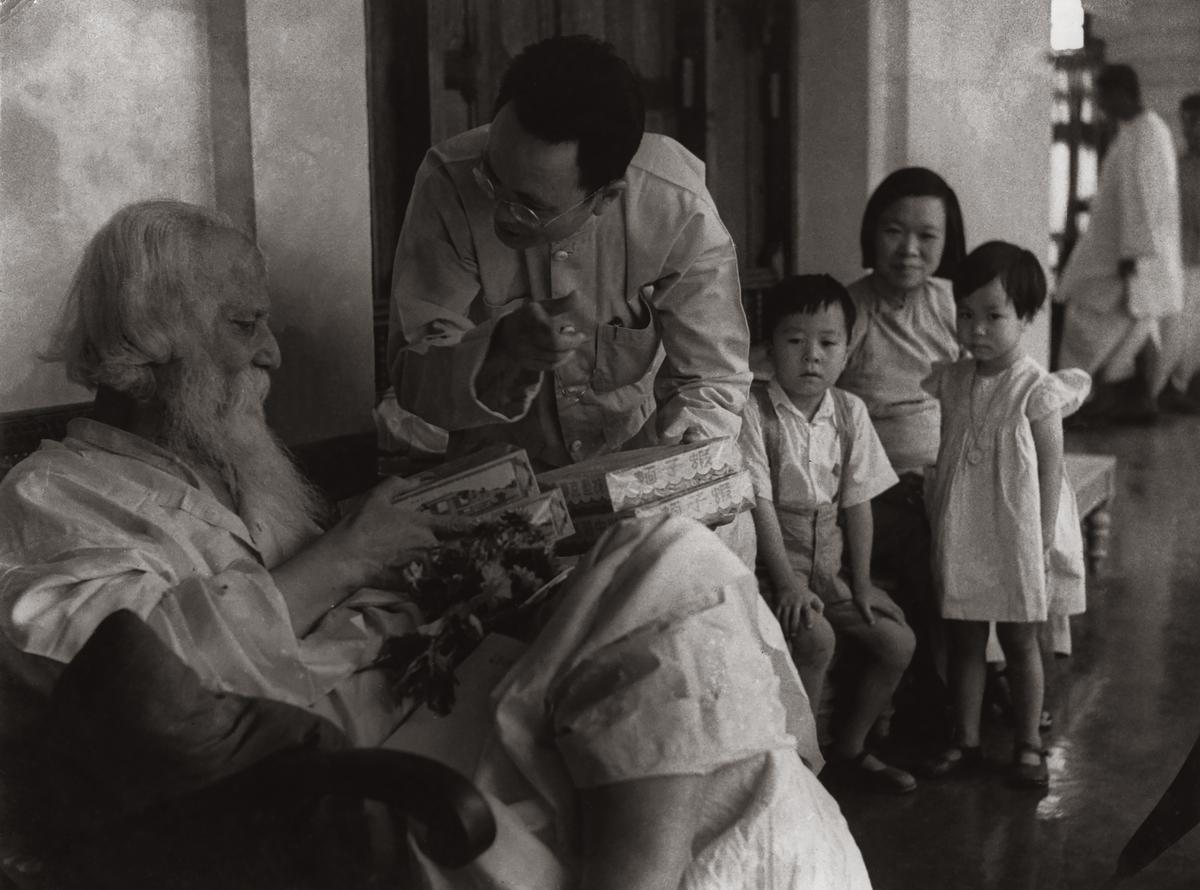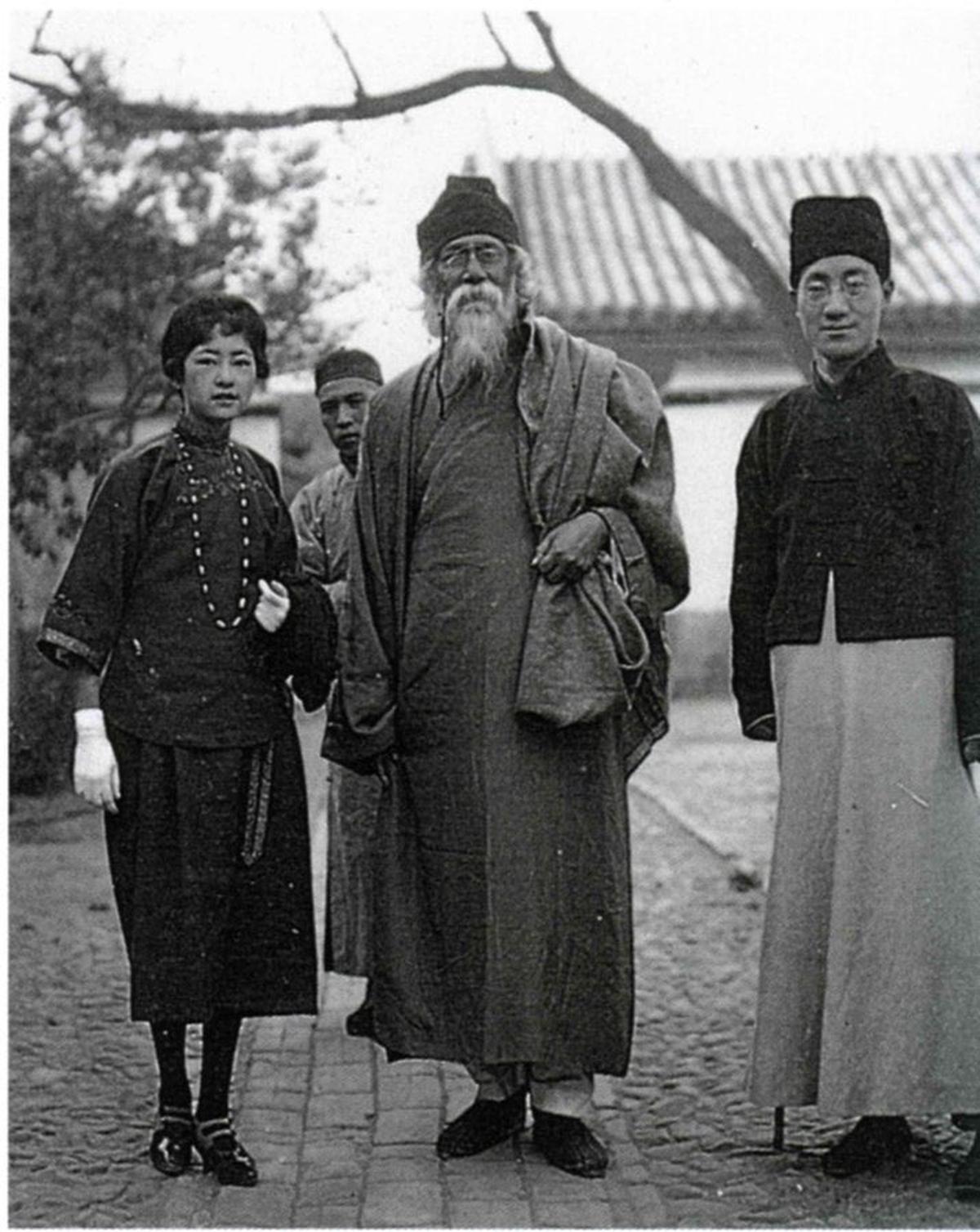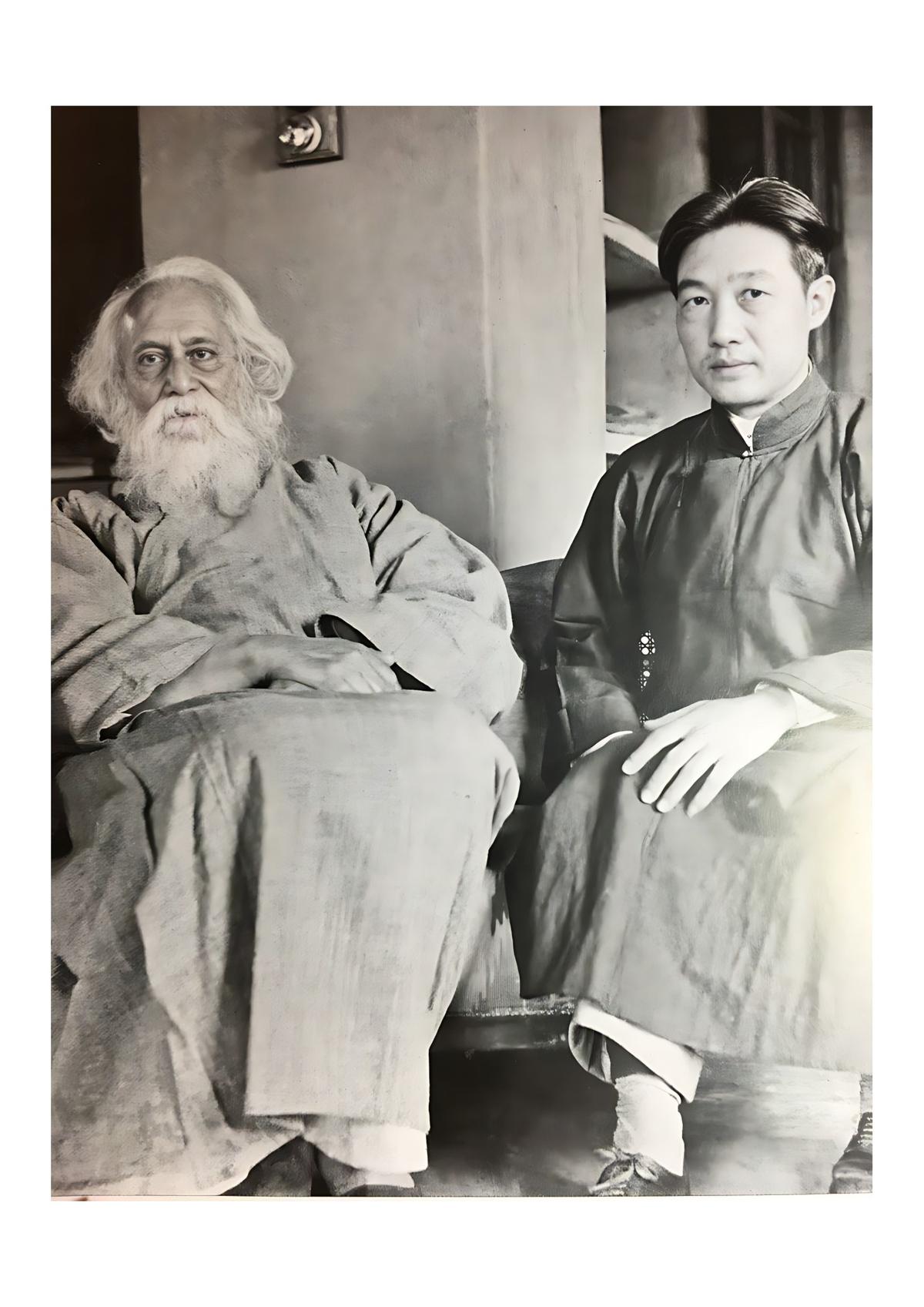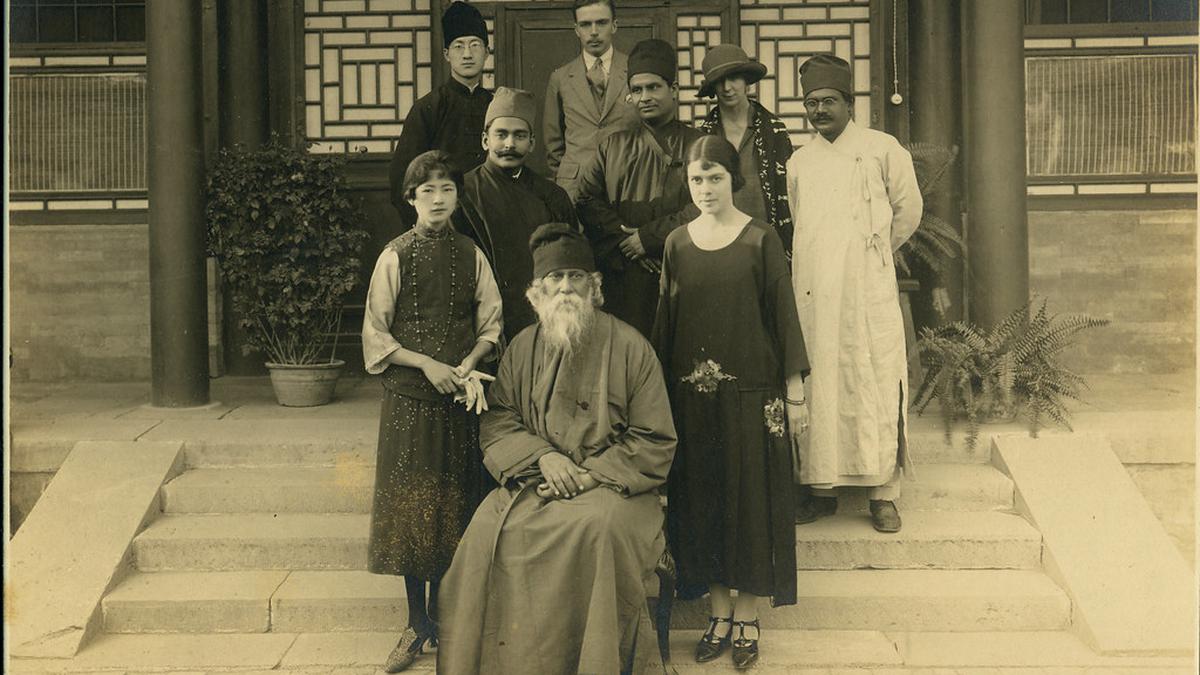Gandhi Global Family, in partnership with the Indian Institute of World Culture, is organising a photo exhibition in Bengaluru, ’Rabindranath Tagore: The Spirit of Asia and Our Human Future’ to commemorate 100 years of Rabindranath Tagore’s trip to China in 1924 and remember the cultural and artistic connections that formed between India and China through his visit.

Tagore and Tan Yun Shan.
| Photo Credit:
Chameli Ramachandran
Cheena Bhavana
The exhibition will showcase Tagore’s trip to China and his visit to Tan Yun Shan, a Chinese Scholar and great friend of Tagore who upon invitation of Tagore came to Shantiniketan and started the Cheena Bhavana at Visva Bharati University in Shantiniketan. Tan, who was a disciple of Mahatma Gandhi, is also known for his contributions to the Indian freedom struggle and his efforts in forging Sino-India cultural relationship.

(From left) Lin Huiyin, Tagore, Xu Zhimo.
| Photo Credit:
SPECIAL ARRANGEMENT
Lin Huiyin and Xu Zhimo
The exhibition will also showcase a photograph of Tagore with Lin Huiyin and Xu Zhimo, the two young hosts acted as interpreters on his trip during April 1924. Lin is hailed as the first female architect in modern China, who along with her architect husband Liang Sicheng started the Architecture Department of Northeastern University in 1928. Lin along with her husband helped revive the cultural heritage sites of China. Xu Zhimo, a Chinese romantic poet and writer, started the Crescent Moon Society, inspired by a poem by Rabindranath Tagore.

Tagore and Xu Beihong.
| Photo Credit:
SPECIAL ARRANGEMENT
Ink brush portraits
Xu Beihong’s painting of Tagore will also be up for display. Xu was well known for his ink-and-wash paintings. Xu Beihong visited Shantiniketan in 1939 and stayed there for over a year. Xu also created many Chinese ink brush portraits of Tagore. On his visit to Shantiniketan Xu said, “Santiniketan is a place which corresponds to my ideal of a center of art and culture…. My visit here is that of a pilgrim. I have come not to give but to receive the great gifts that India may have to bestow upon my country and people as she did in the days gone by.”
Nandita Chaturvedi, one of the organisers of the exhibition, said, “We wanted to mark this historic trip that Tagore did in 1924 and use this occasion to talk about Tagore’s vision for peace in Asia, through organising this event we were moved by how strong his influence still remains in China. Tagore has been the second most translated author in the country after Shakespeare.”
“If you look at modern Chinese literature almost, all the figures are heavily influenced by Tagore. We feel that this history of cultural exchange that happened is very important during this time also,” she further added.
Sino-India friendship
“While organising the exhibition we have got a very positive response from different institutions. People are very moved by the ideas of Tagore, and especially in the ways that he represents the universal. People also feel that he can form a bridge in this time and kind of show the path forward to find a new unity in Asia,” Nandita said.
The exhibit will be inaugurated on April 13 by Kong Xianhua, Chinese Consul General from Mumbai, and Latha Reddy, former Deputy National Security Adviser of India and ex-Ambassador. The inaugural event will start at 5 p.m. at the Indian Institute of World Culture, Basavanagudi, Bengaluru.










